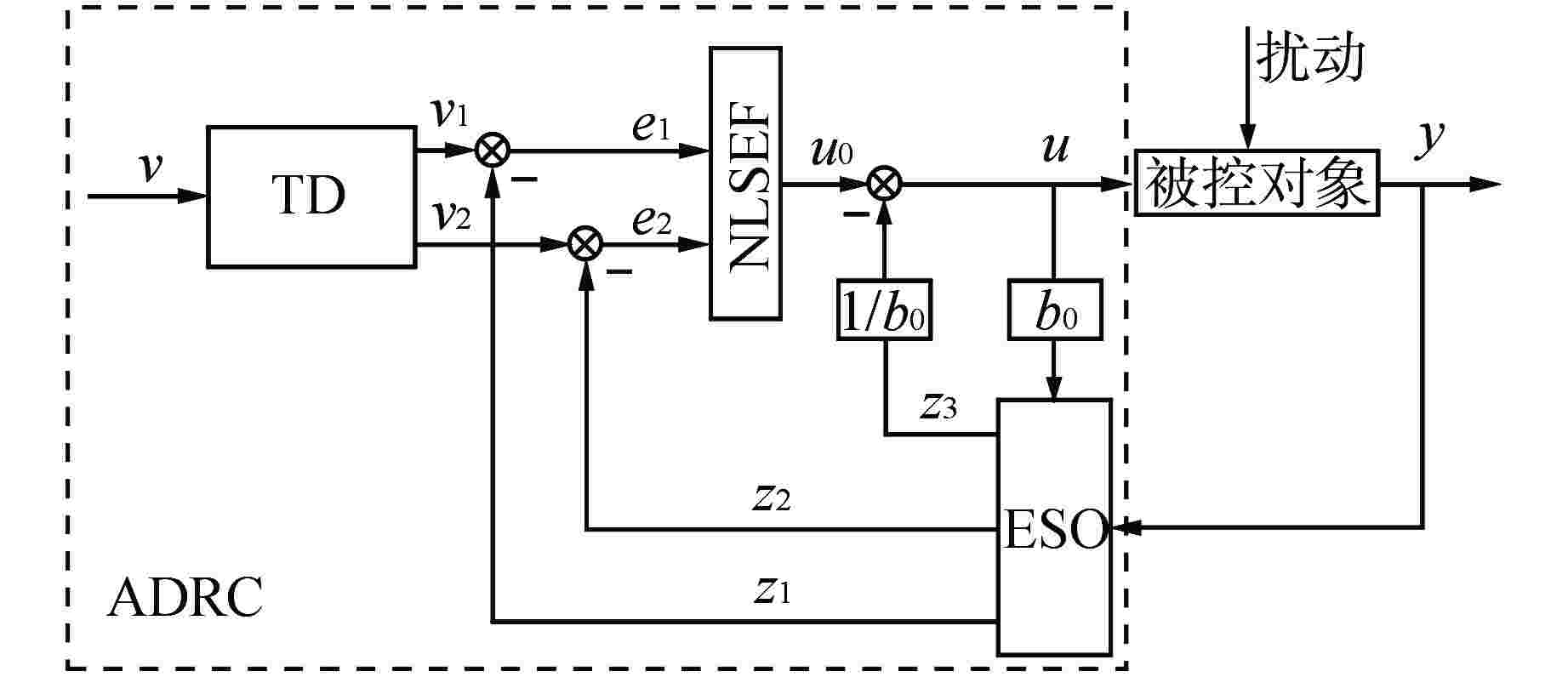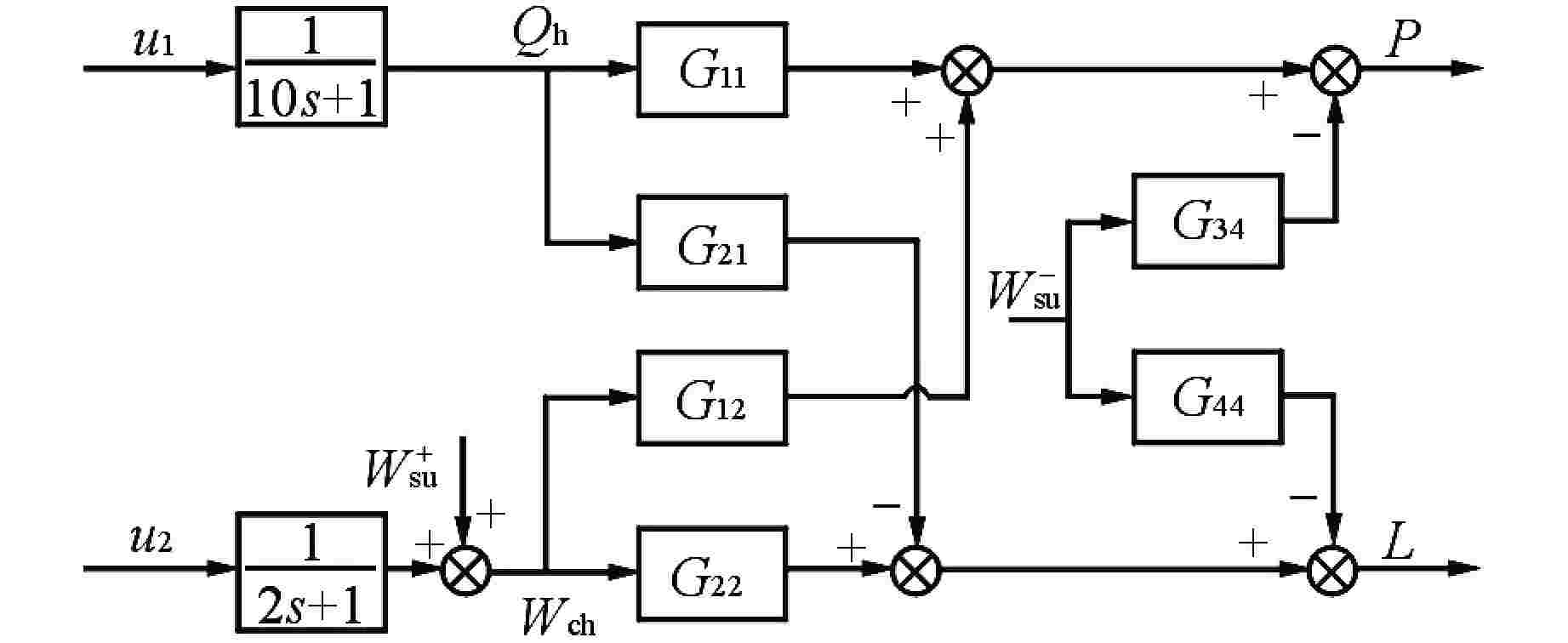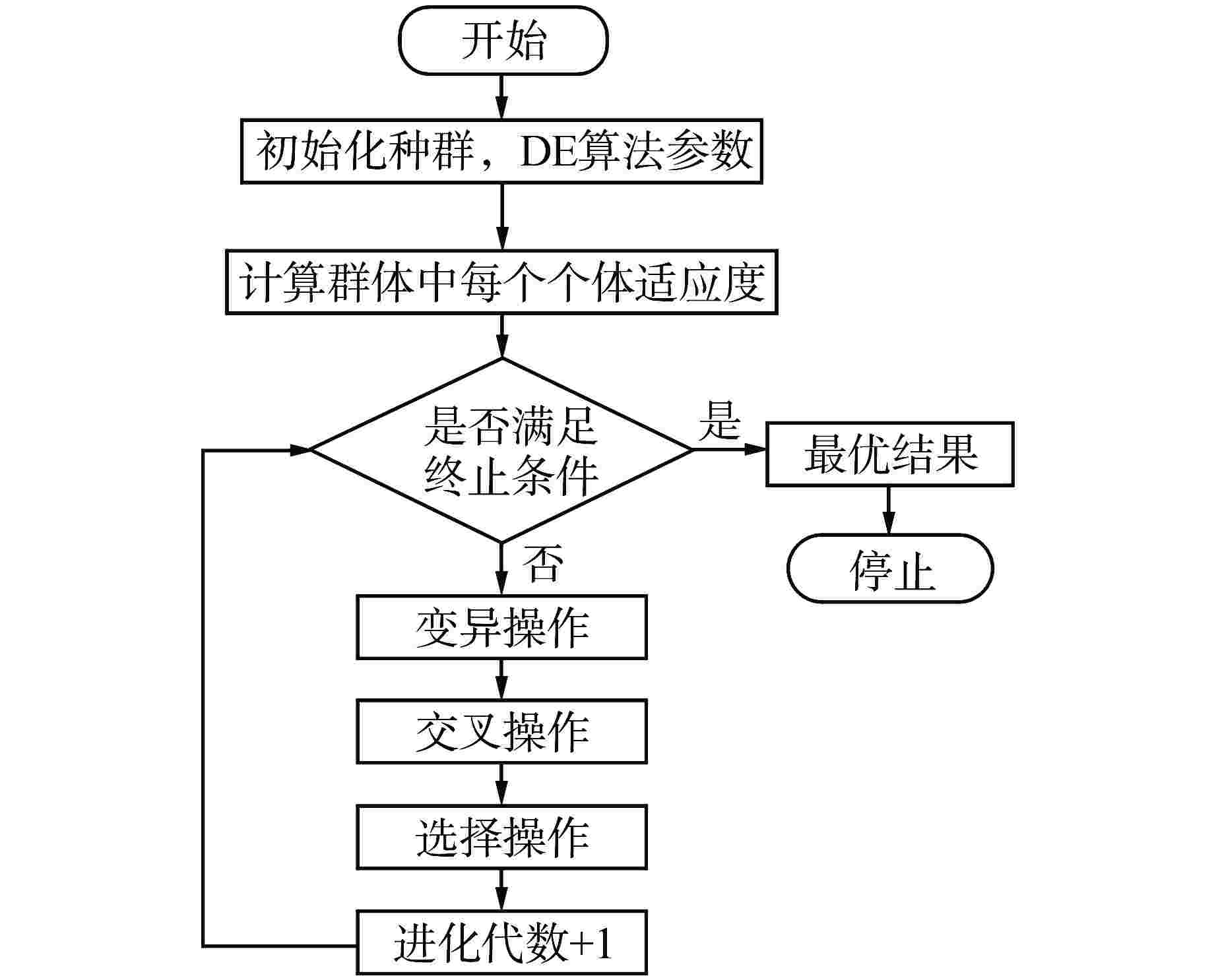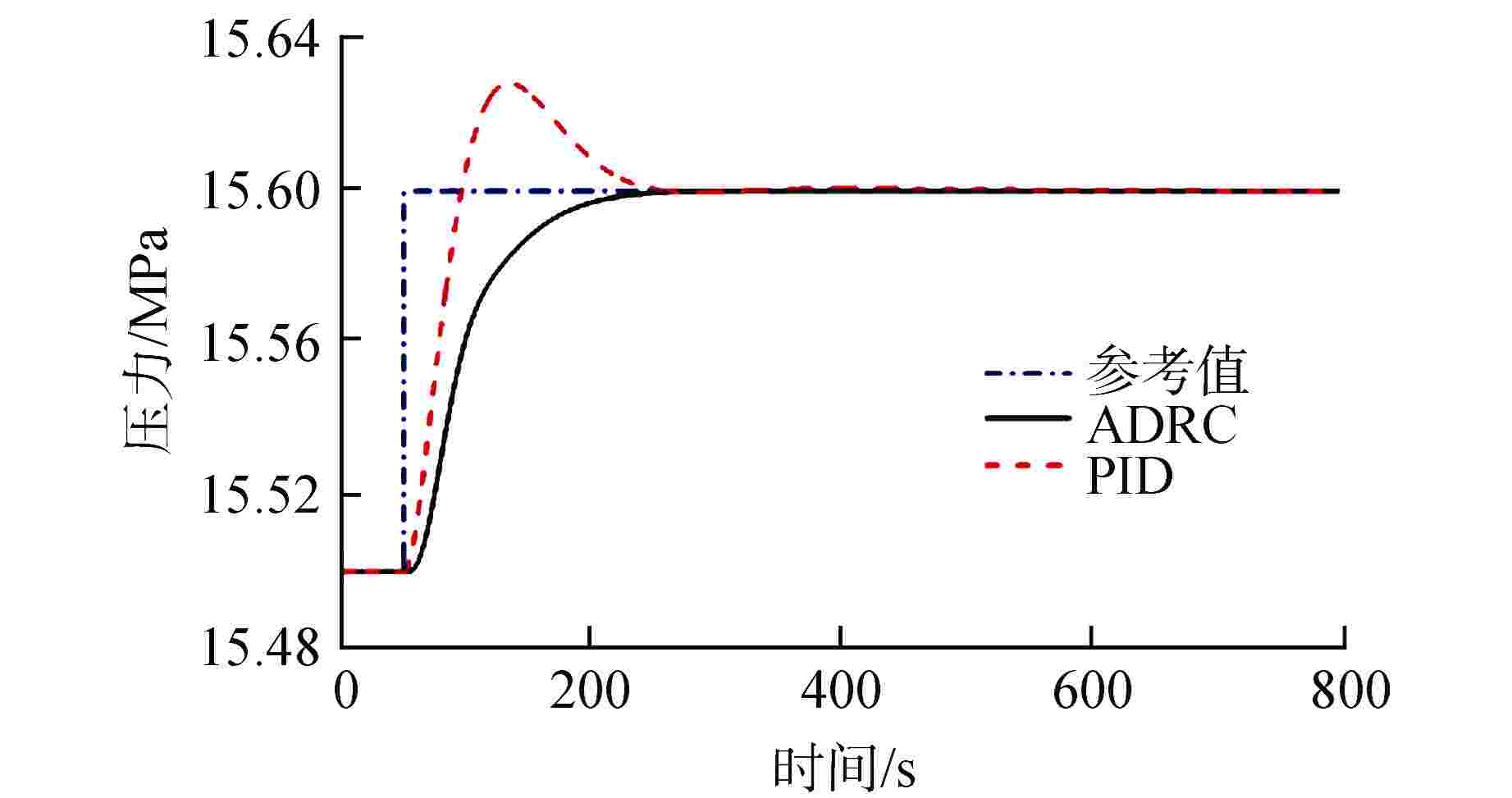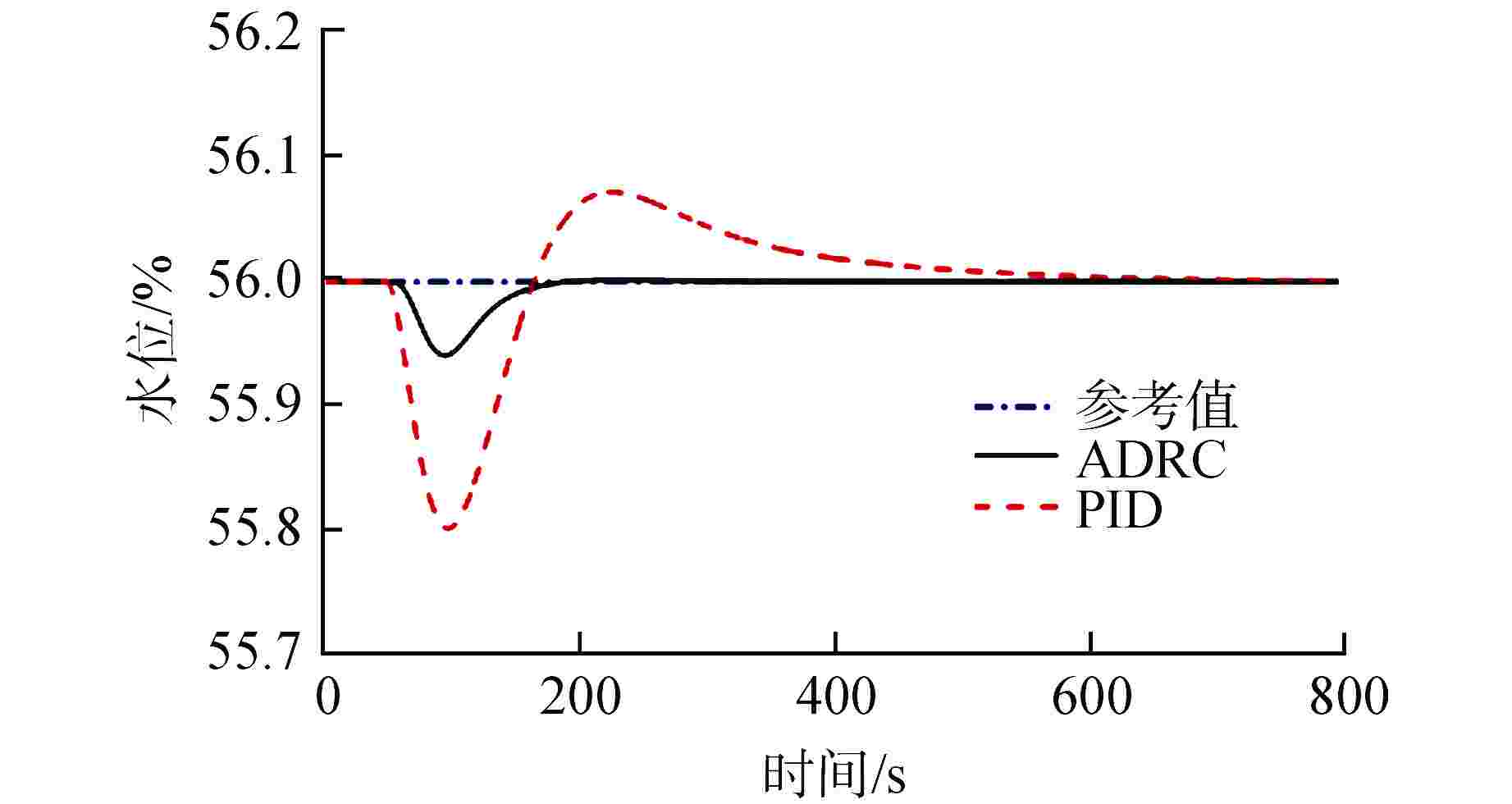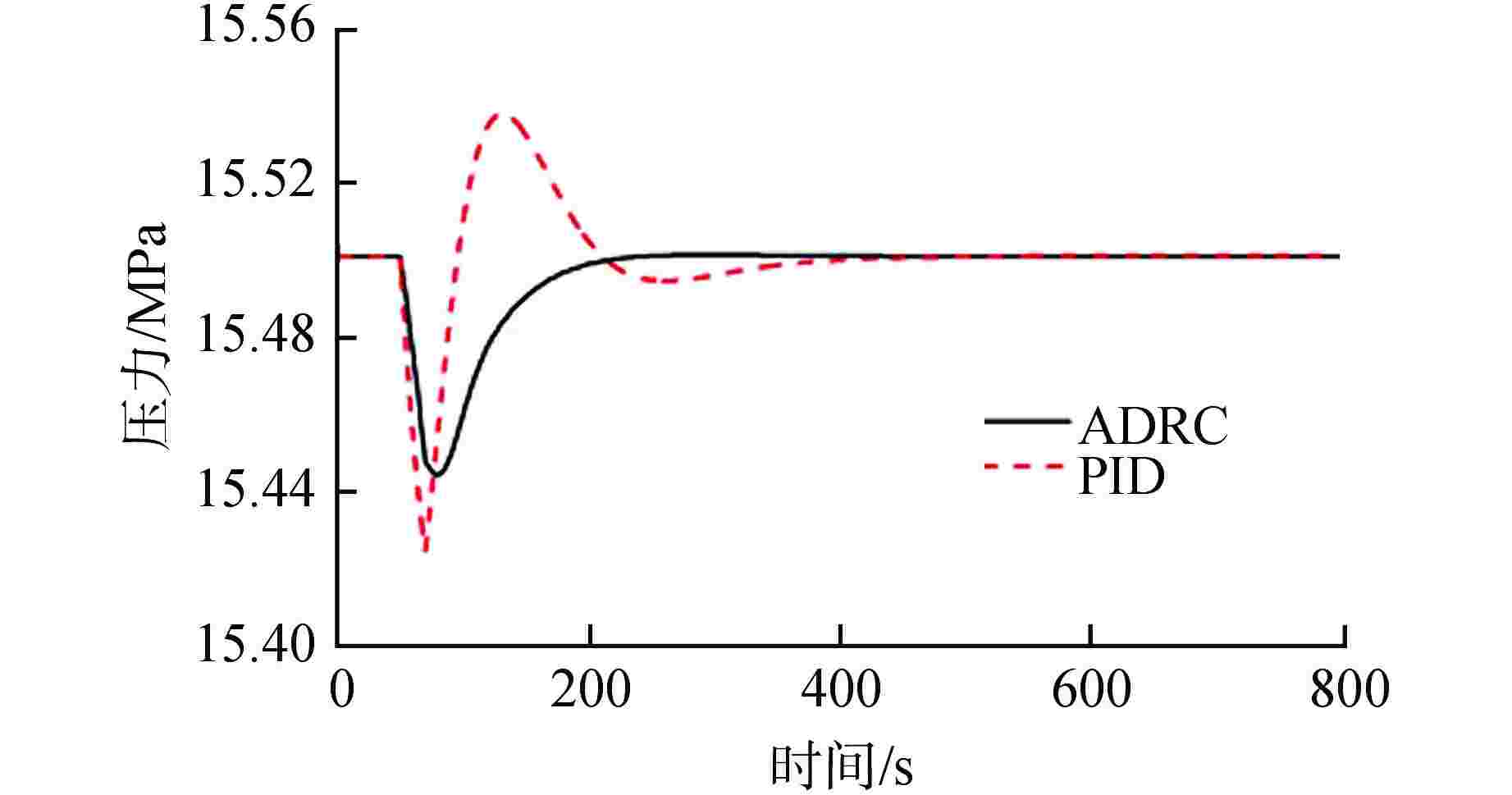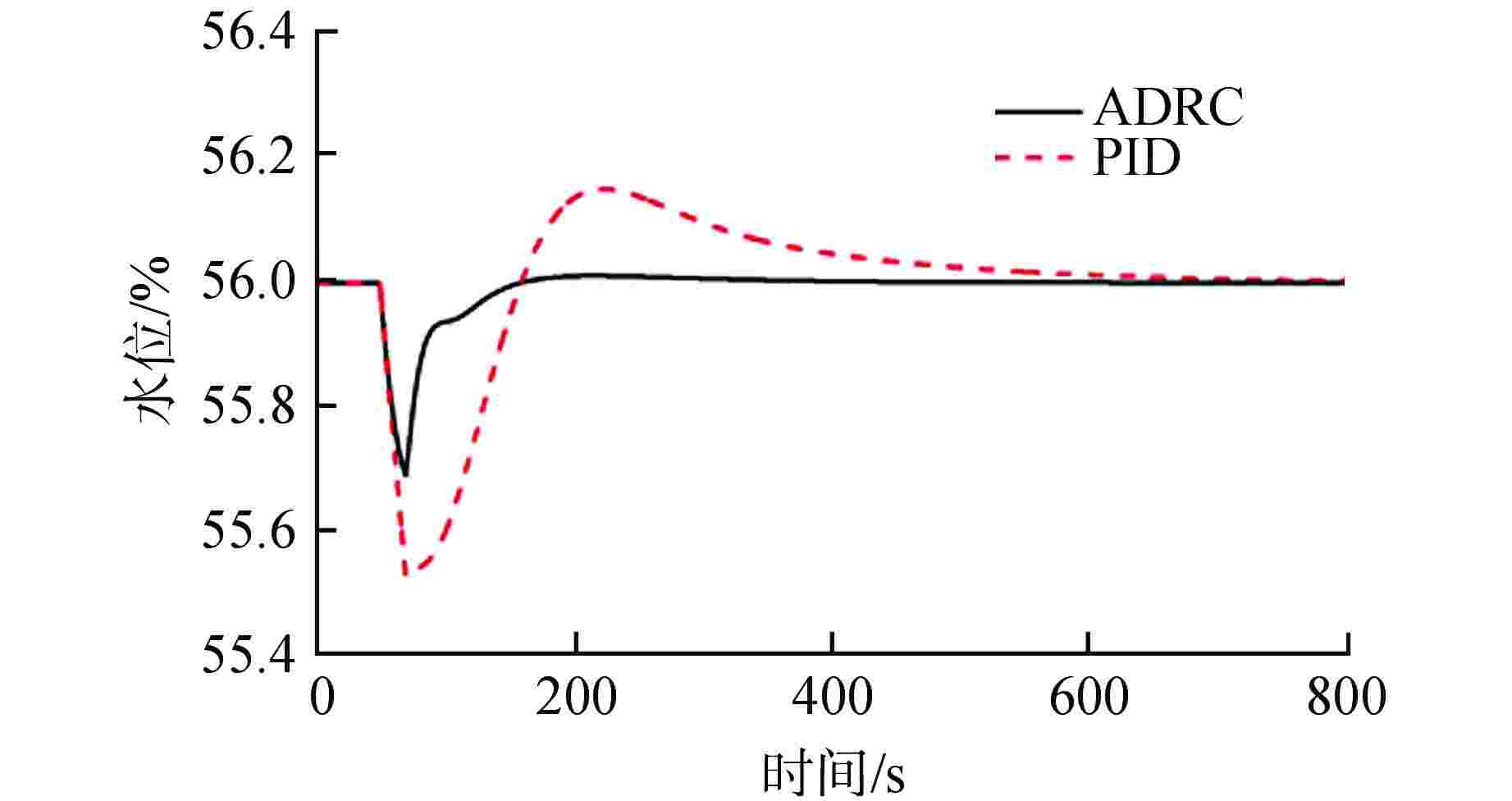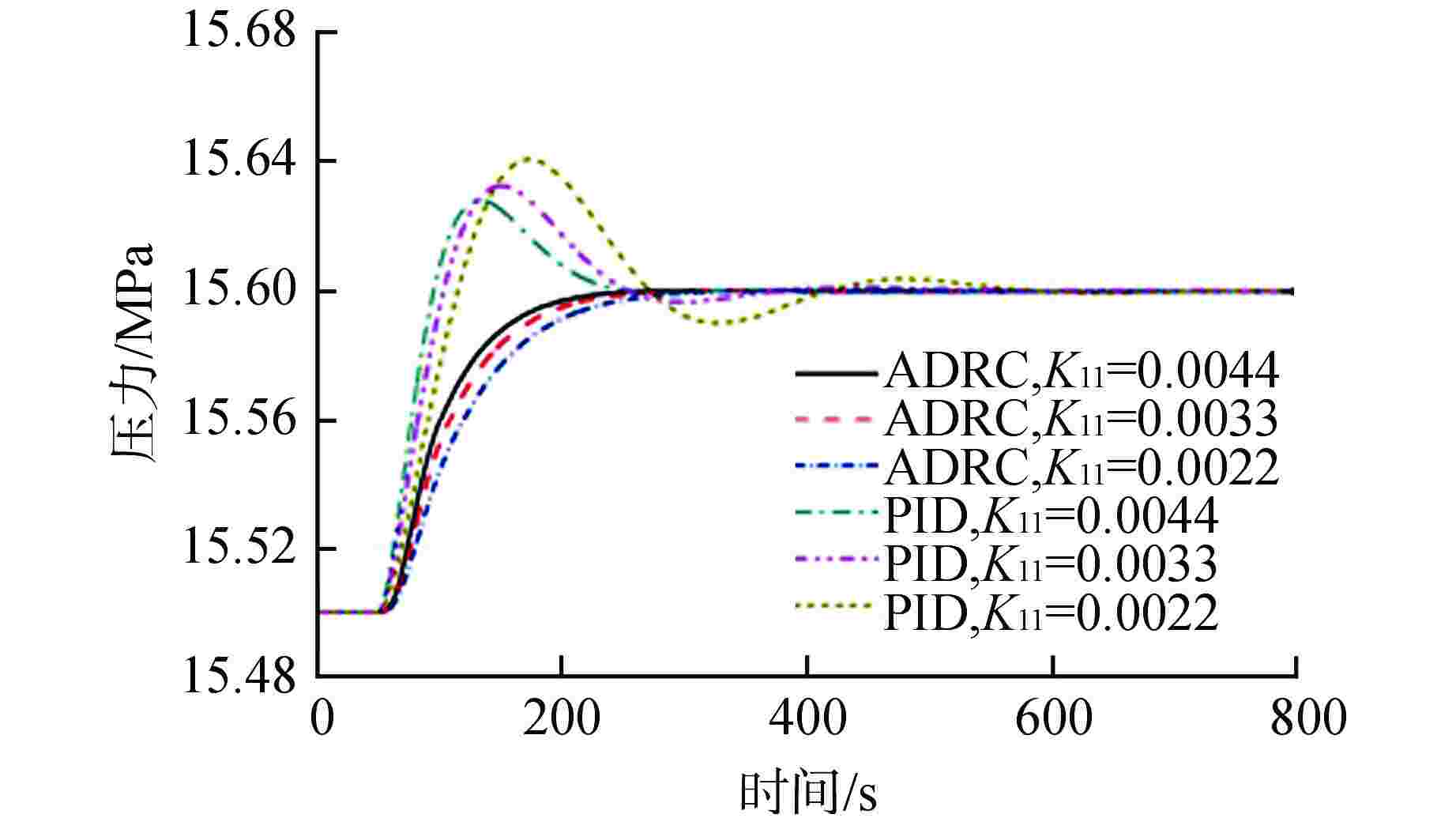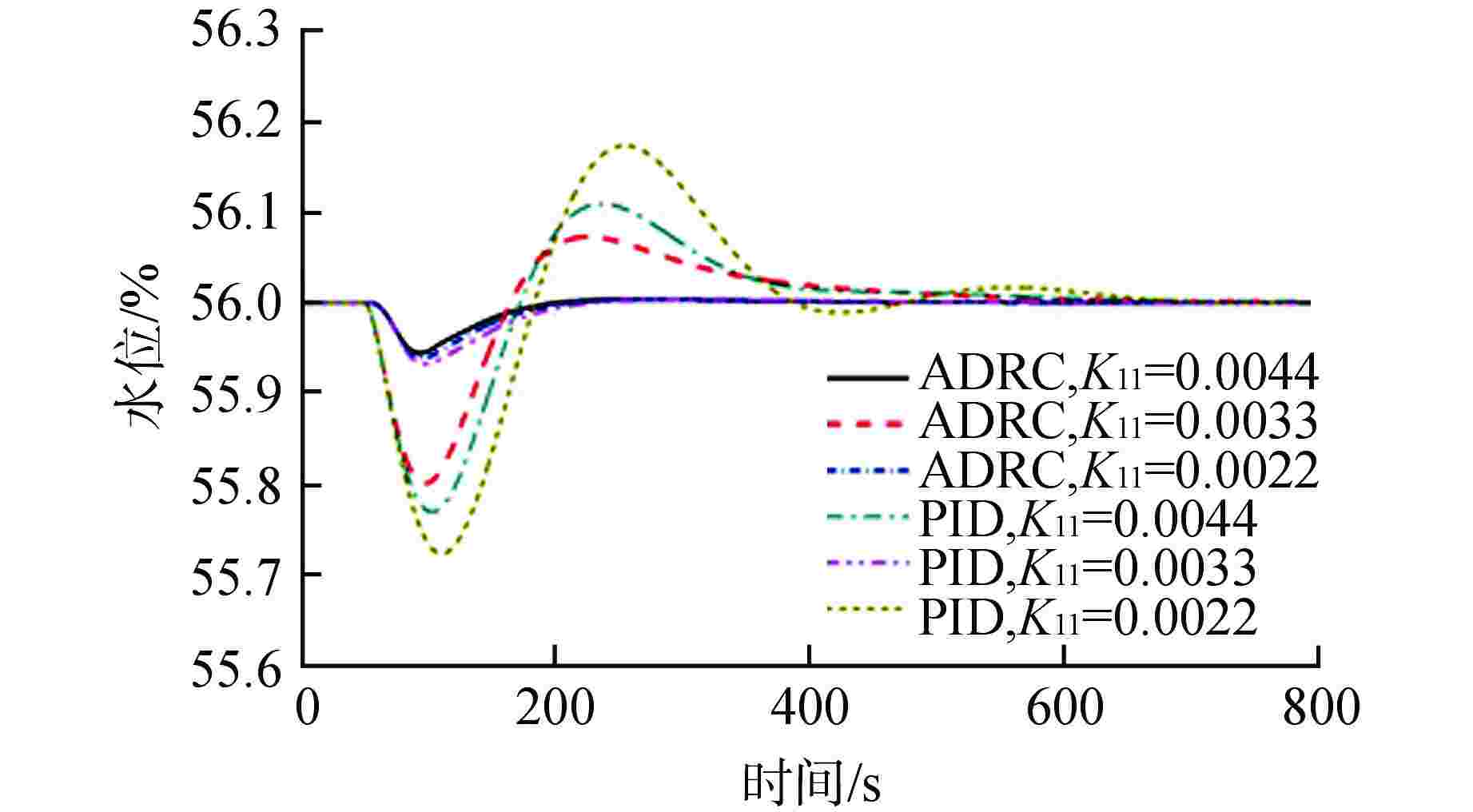Study on Multivariable Decoupling Control of Small PWR Pressurizer based on Active Disturbance Rejection Control
-
摘要: 小型压水堆稳压器具有非线性、时变和强耦合等特点,很难建立准确的数学模型,传统控制方法难以取得满意的控制效果。因此提出了一种基于自抗扰技术(ADRC)的稳压器多变量解耦控制方法。首先搭建稳压器三区非平衡模型,基于微小摄动理论对模型进行线性化处理,得到压力和水位耦合传递函数方程。然后,基于传递函数设计稳压器ADRC解耦控制器,使用差分进化算法对控制器参数进行多目标优化。最后,以小型堆稳压器为研究对象,利用MATLAB仿真平台将ADRC解耦控制与传统比例-积分-微分(PID)控制进行对比分析。结果表明,所设计的控制器能够有效解决稳压器压力和水位之间的耦合问题,较传统PID控制器具备更好的抗干扰性和鲁棒性,为ADRC方法在稳压器的工程应用提供了理论基础。
-
关键词:
- 稳压器 /
- 三区非平衡模型 /
- 自抗扰技术(ADRC) /
- 解耦控制
Abstract: Since the pressurizer (PZR) in a small pressurized water reactor (PWR) features non-linearity, time-dependence, and strong coupling, its accurate mathematical model is hard to build and the traditional control method cannot provide a satisfactory control effect. Therefore, this study describes a multivariable decoupling control method based on the active disturbance rejection control (ADRC) technique for such PZR. In this study, a non-equilibrium three-region model of PZR is built, and processed linearly based on the perturbation theory to generate the pressure and water level coupled transfer function equation. Then, an ADRC based decoupling controller is designed based on the transfer function, and the parameters of the controller are subjected to multi-objective optimization via differential evolution. Finally, the ADRC based decoupling control and traditional proportional-integral-derivative (PID) control for the same small reactor PZR are compared and analyzed by the MATLAB simulation platform. As demonstrate by the comparison, the ADRC based decoupling controller can effectively solve the PZR pressure and level coupling problem and has better robustness and interference immunity than the traditional PID controller. Therefore, this study provides a theoretical foundation for the engineering application of the ADRC method to the PZRs.-
Key words:
- PZR /
- Non-equilibrium three-region model /
- ADRC /
- Decoupling control
-
表 1 稳压器主要参数
Table 1. Main Parameters of PZR
物理量名称 数值 运行压力/MPa 15.5 冷却剂平均温度/℃ 310 饱和水(汽)温度/℃ 344.76 饱和水密度/(kg·m−3) 594.53 饱和汽密度/(kg·m−3) 101.93 主冷却剂体积/m3 58.5 稳压器体积/m3 13.5 -
[1] 张益林,石波,赵福宇. 小型压水堆稳压器控制特性研究[J]. 核动力工程,2017, 38(6): 61-64. [2] HU P, ZHAO F Y, TAI Y. Coordination control and simulation for small nuclear power plant[J]. Progress in Nuclear Energy, 2012, 58: 21-26. doi: 10.1016/j.pnucene.2012.02.001 [3] 钱虹,周蕾,房振鲁. 压水堆核电站稳压器压力和水位的解耦控制研究[J]. 核科学与工程,2017, 37(1): 5-11. doi: 10.3969/j.issn.0258-0918.2017.01.002 [4] 薛定宇. 控制系统计算机辅助设计-MATLAB语言与应用[M]. 北京: 清华大学出版社, 2012: 303-308. [5] 许志斌. 核电站稳压器机理建模分析及控制研究[D]. 广州: 华南理工大学, 2016: 52-54. [6] 瞿小龙,张乃尧,贾宝山,等. 采用典型模糊控制器实现压水堆稳压器的综合控制[J]. 核动力工程,2005, 26(2): 163-166. doi: 10.3969/j.issn.0258-0926.2005.02.015 [7] 钱虹,苑源. 核电站稳压器压力非自衡系统的预测控制[J]. 核动力工程,2019, 40(3): 87-92. [8] 韩京清. 自抗扰控制技术[M]. 北京: 国防工业出版社, 2008: 1-5. [9] 黄焕袍. 自抗扰控制在火电厂主汽温控制中的应用[J]. 系统仿真学报,2005, 17(1): 241-244. doi: 10.3969/j.issn.1004-731X.2005.01.064 [10] BAEK S M, NO H C. A non-equilibrium three-region model for transient analysis of pressurizer water reactor pressurizer[J]. Nuclear Technology, 1986, 74(9): 261-263. [11] 尹水红. 自抗扰技术在多变量控制系统中的应用[D]. 北京: 华北电力大学, 2007: 32-39. [12] 刘金琨. 先进PID控制MATLAB仿真[M]. 北京: 电子工业出版社, 2016: 330-340. -





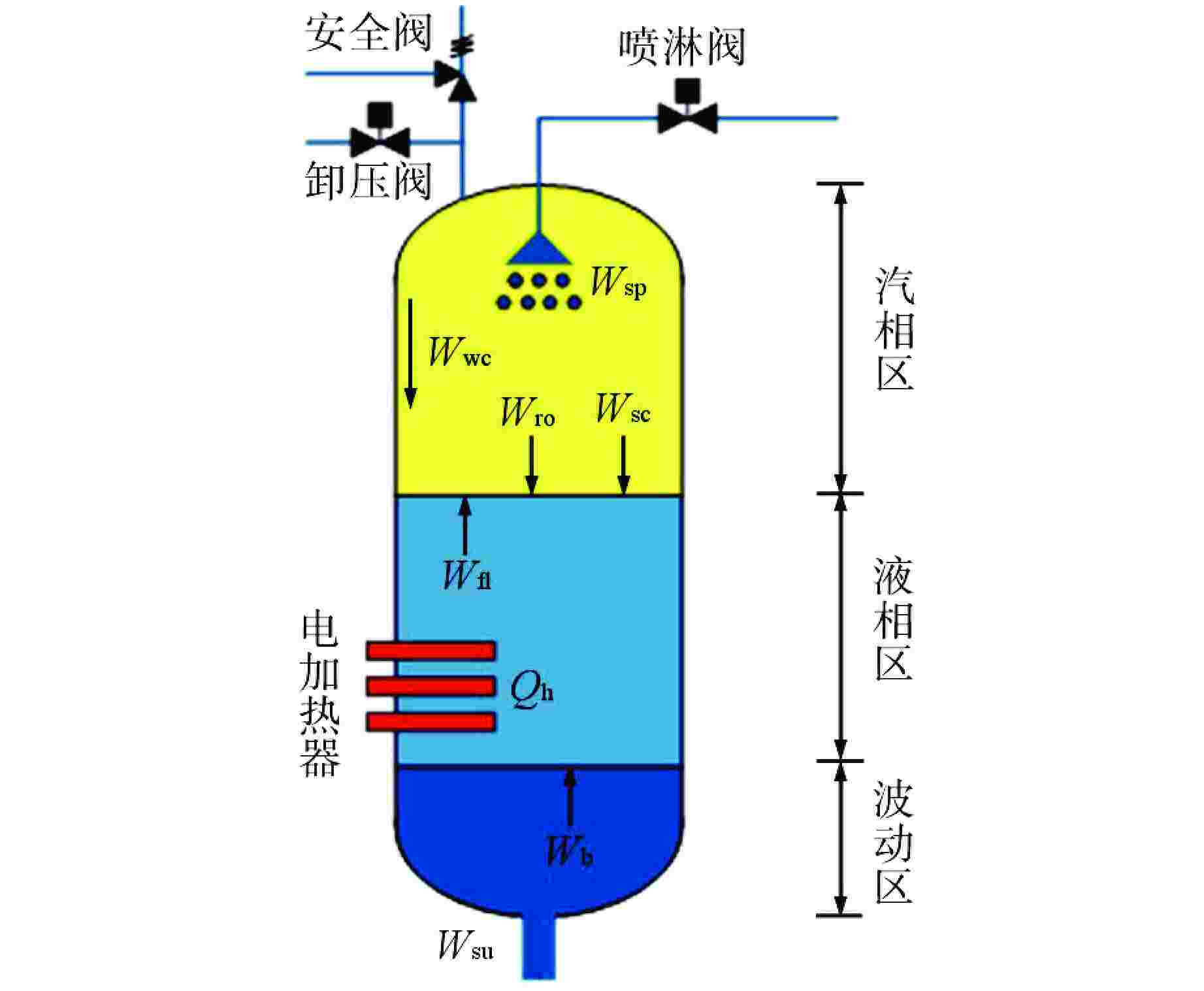
 下载:
下载:
